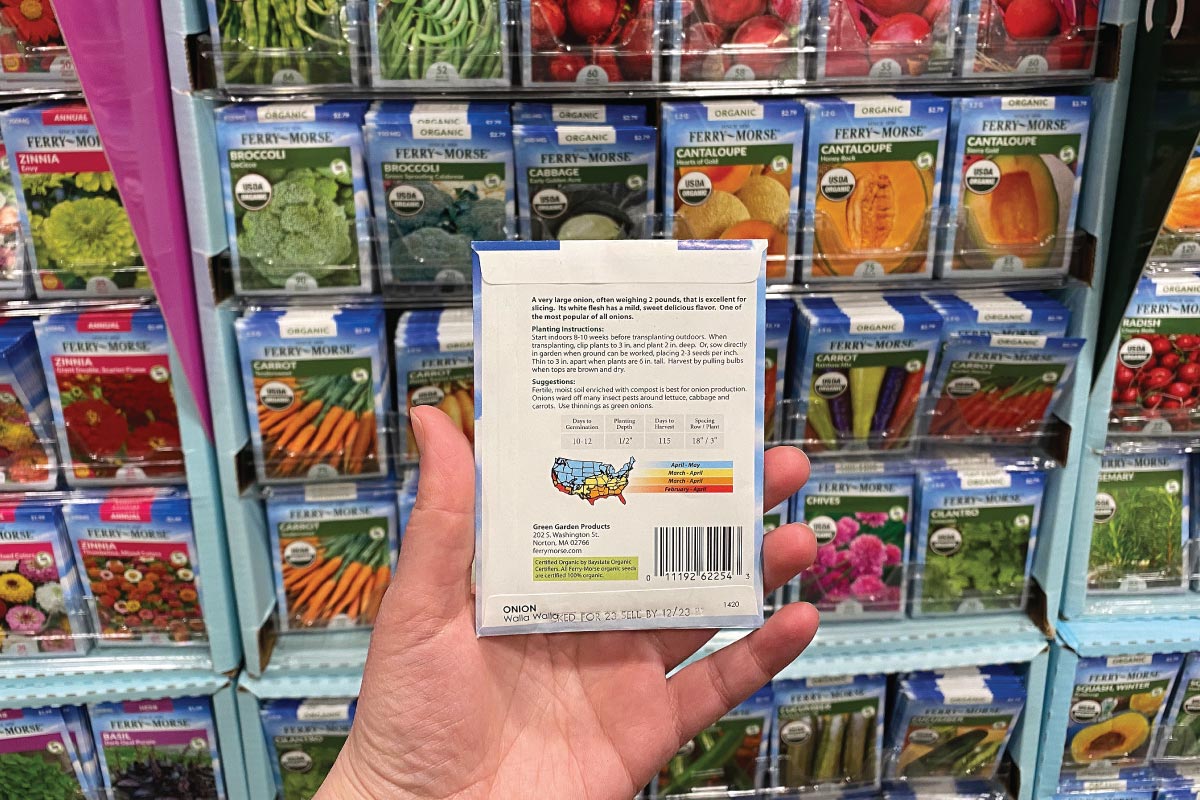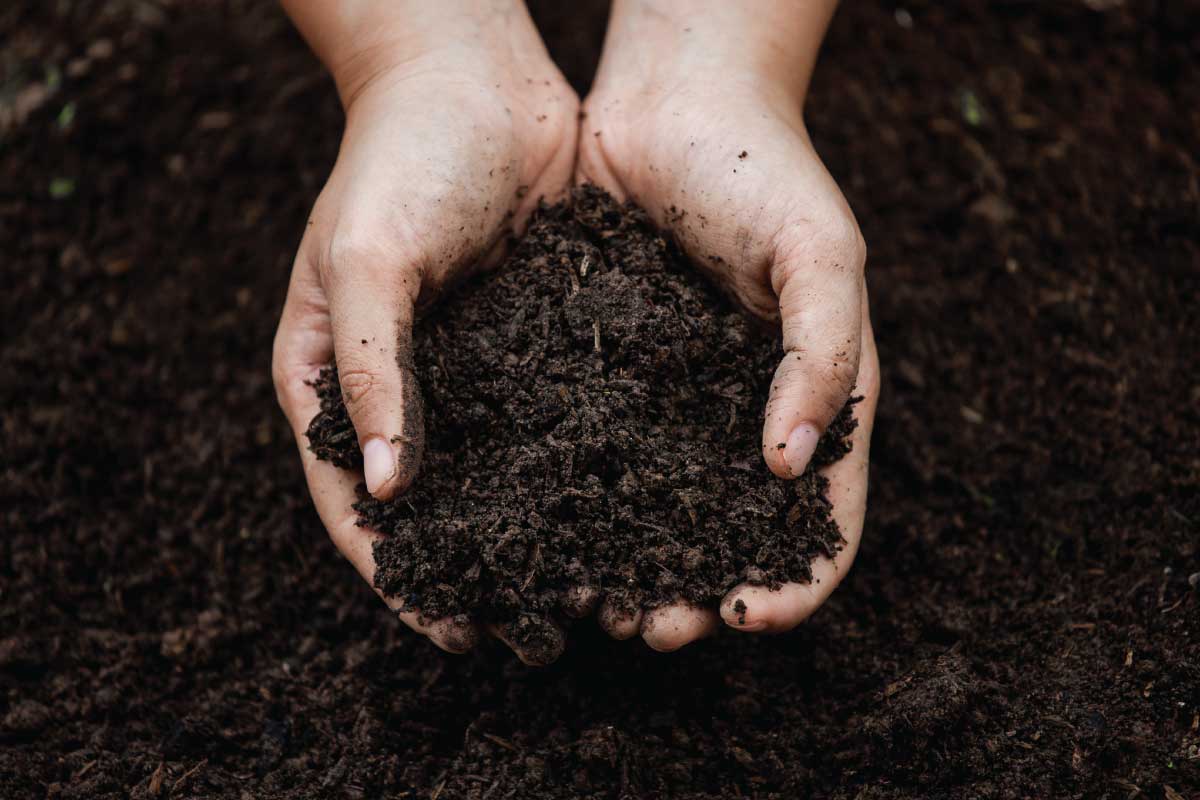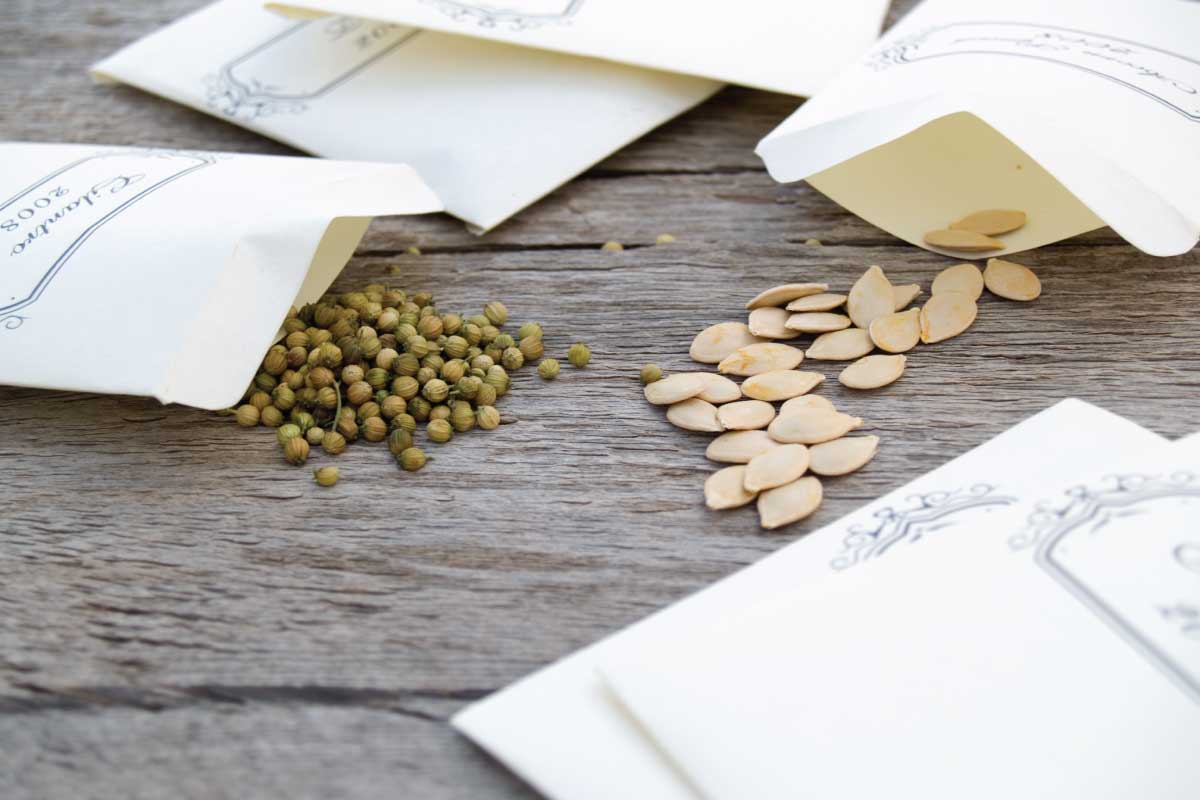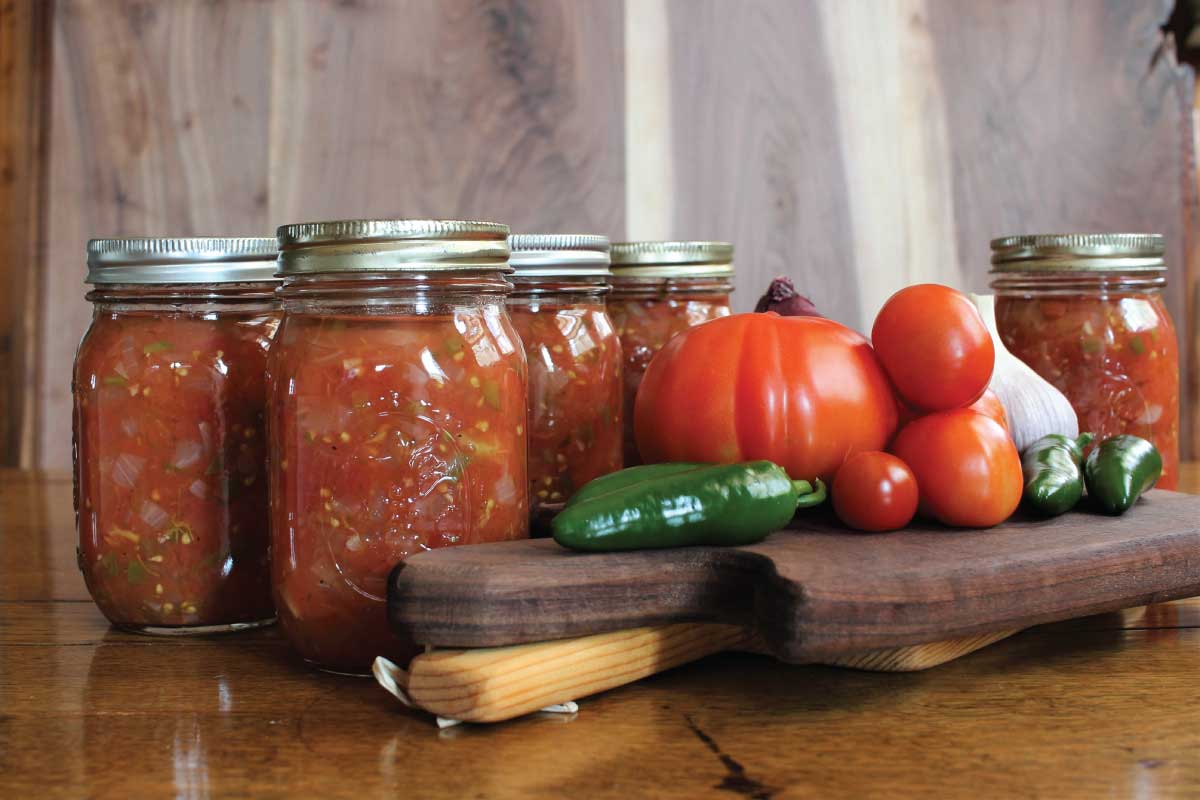Understanding the information on the front and back of a seed packet and following its instructions is important for a successful planting and growing experience.
How to Read a Seed Packet
Use this guide to learn how to read a seed packet, including seed information, plant information, and planting and growing information.
Keep in mind that seed packets vary a lot depending on the brand, plant, and more. So, every seed packet may not contain everything on this list and may contain things that are not on this list.
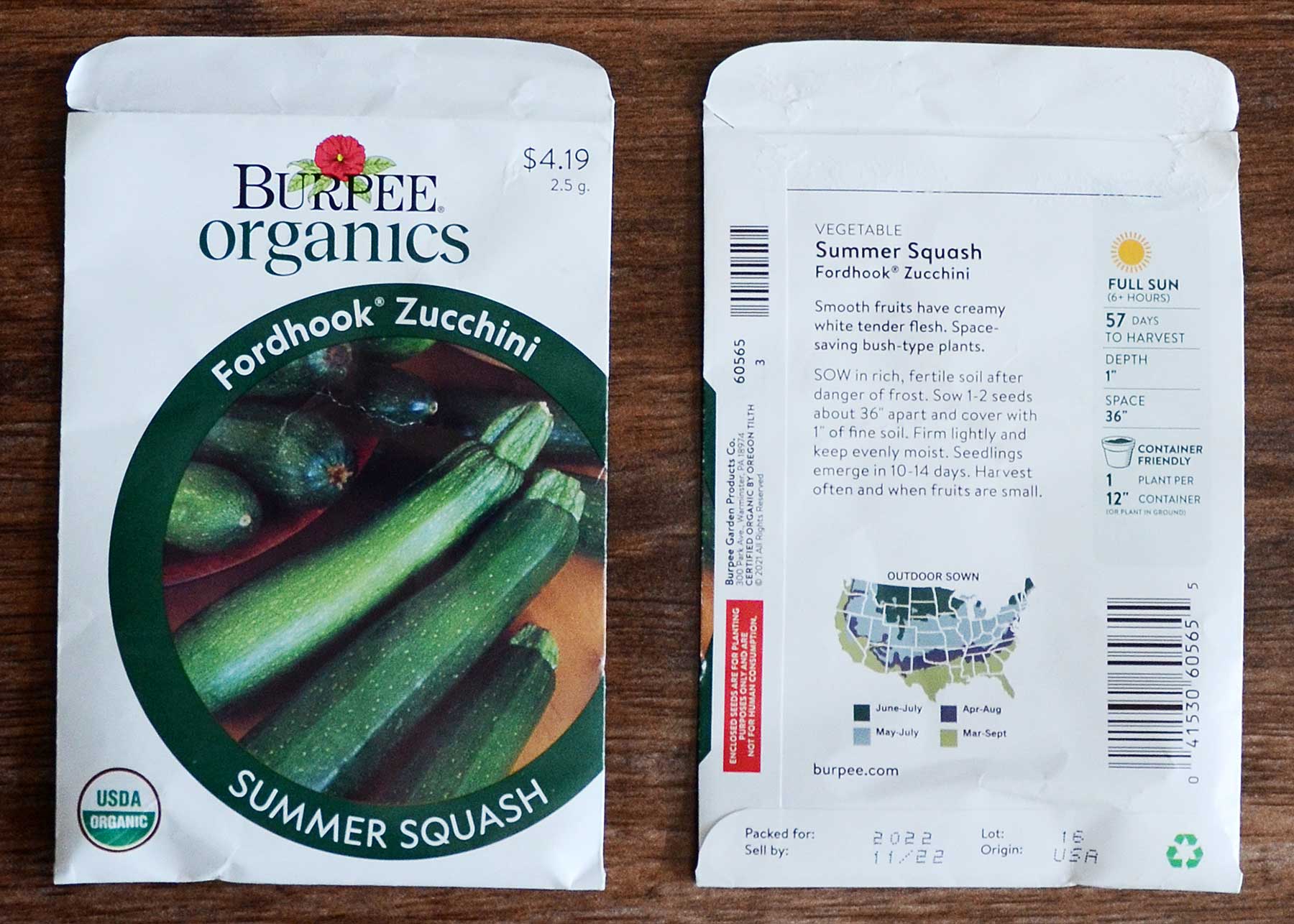
Seed Information
BRANDING, which may include the company name, logo, address, phone number, website, etc.
PRICE of the seed packet.
NET WEIGHT of the seeds per packet (not including the packaging), which may be measured in grams (g), milligrams (mg), ounces (oz), or otherwise.
QUANTITY of seeds per packet, as an alternative to net weight, which may include a minimum number of seeds.
ORIGIN, or what country the seeds are from.
PACKED FOR DATE, meaning when the seeds were packed (not necessarily when they were harvested).
SELL BY DATE, which is not necessarily an “expiration date” or “use by” date. While the germination rate may decrease over time, seeds can be viable for years if stored in ideal conditions.
GERMINATION RATE, as a percentage, along with the date of the germination test and possibly a lot number. The percentage indicates how many seeds are expected to germinate per 100 seeds. So, a germination rate of 90% means that at least 90 seeds are expected to germinate if you plant 100.
NON-GMO (Genetically Modified Organism), or NON-GE (Genetically Engineered). GMO seeds are not sold to home gardeners, but seed companies may choose to add this label to address concerns about GMOs. Many seed companies have signed a Seed Safe Pledge as a commitment to non-GMO seeds.
OPEN-POLLINATED (OP) means the plants are pollinated openly by insects, birds, wind, etc. Planting an open-pollinated seed will produce the same plant that the seeds were harvested from.
HEIRLOOM seeds are seeds that have been saved and passed down for generations from plants that were found to have desirable traits. All heirlooms are open-pollinated, but not all open-pollinated are heirlooms.
HYBRID seeds are the result of two different plant varieties being crossed to create a new third variety. This is done purposefully with the goal of the new variety acquiring desirable characteristics from each variety used to create it. Planting a seed harvested from a hybrid plant will not produce the same plant, but rather one of its parent plants.
UNTREATED means not coated with fungicides or insecticides.
USDA-CERTIFIED ORGANIC (sometimes displaying a USDA Organic seal) means that the seeds meet the standards of the USDA’s National Organic Program (NOP).
WARNINGS, such as that the seeds are not for human consumption.
HERMETICALLY SEALED means the seed company has packaged the seeds in an airtight way to attempt to reduce the rate of deterioration and loss of germination rate.
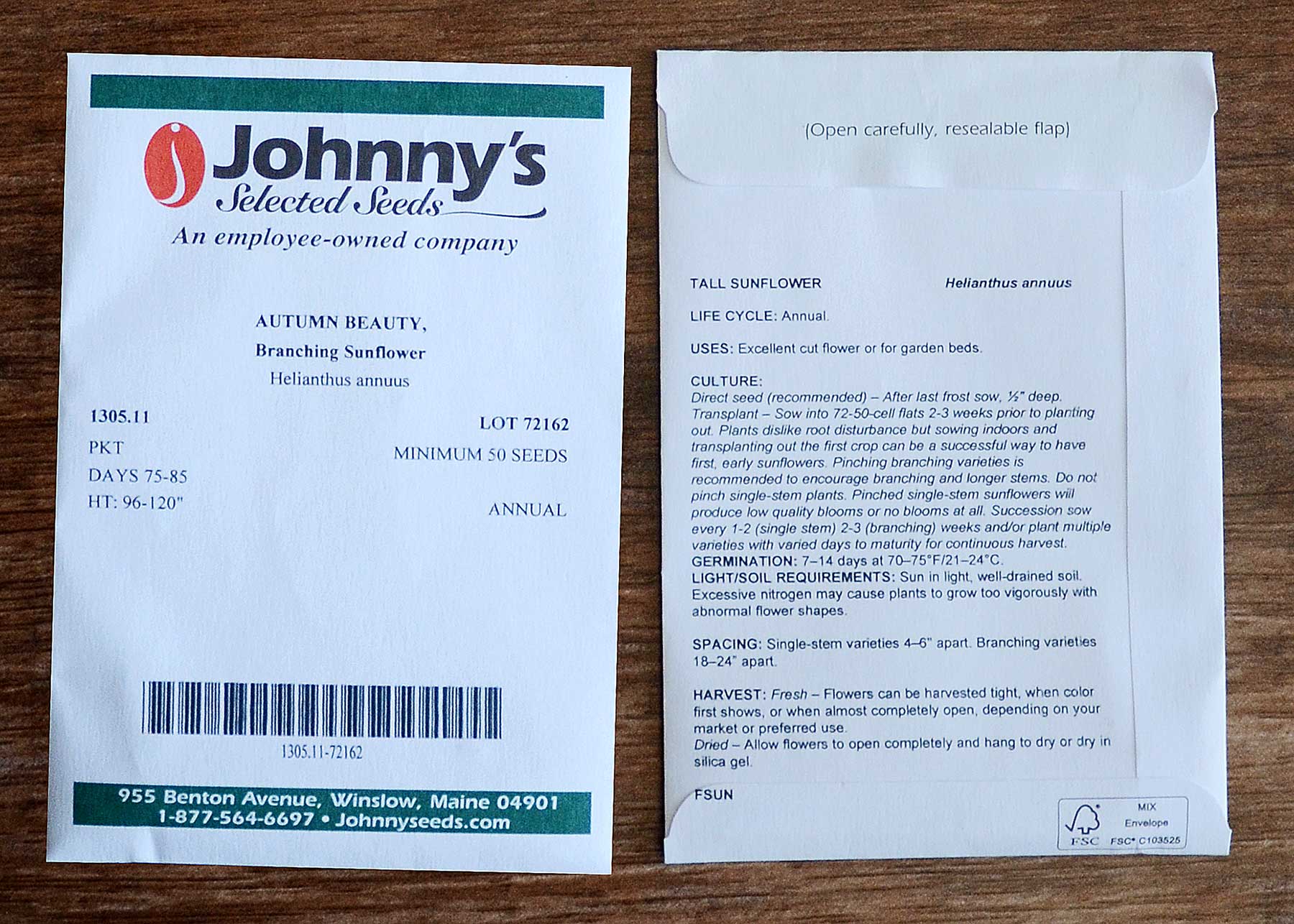
Plant Information
NAME, including its common name and sometimes its botanical name.
TYPE such as vegetable, herb, flower, etc.
LIFE CYCLE such as annual, biennial, or perennial.
PHOTO or ILLUSTRATION of the plant.
DESCRIPTION of the plant and its uses, which may include things like determinate or indeterminate tomatoes, Scoville scale heat level for peppers, whether it’s container-friendly, etc. Also, it may include traits like being resistant to things like deer, rabbits, pests, diseases, etc.
SIZE of the plant (i.e. height), blooms, and/or harvest.

Planting & Growing Information
SEED PREPARATION, which may include stratification (a cold treatment for a period of time to break dormancy and encourage germination), soaking in water, etc.
WHEN TO PLANT based on your hardiness zone (sometimes depicted as a map) or average last frost date. Also, how to plant whether it’s starting seeds indoors or direct sowing.
DEPTH is the depth at which the seeds should be planted, usually anywhere from 1/8″ to 1″, but may be more or less. Generally, larger seeds should be planted deeper. Some seeds, like snapdragon seeds, for example, require light to germinate, so should be surface sown.
DAYS TO GERMINATION, which means the average number of days from when the seed is planted to germinating.
THIN TO or SPACING is how far apart (on center, so from stem to stem) each plant should be in the end. To thin seedlings, either pull them apart carefully at the roots and replant or snip some out.
LIGHT REQUIREMENTS, including full sun, part sun/shade, or full shade.
DAYS TO MATURITY or DAYS TO HARVEST, which means the average number of days from when the seed was planted to maturity, whether that’s when it’s flowering or producing a harvest. Or, if the plant has been transplanted, then it’s the average number of days from the transplant date.
HARVEST, which may include yield estimates, a description of the harvest, and how to harvest.
OTHER directions that may be included: watering/irrigating, fertilizing, hardening off, transplanting, staking, pruning, deadheading, etc.
Conclusion
We hope you learned something in this guide on how to read a seed packet. Understanding and following the information on the front and back of a seed packet sets you up for planting and growing success.

